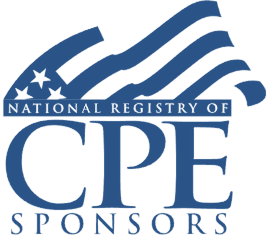Welcome! Save 30% on all CLE, CPE, and Professional Skills webinars, plus 15% off any annual pass with code CYBER2025
About the Course
Introduction
This course will discuss retirement plan options for owners of limited liability companies, partnerships, C corporations, S corporations, sole proprietors, and other businesses. Our panel of qualified plan experts will reveal strategies to substantially increase owner contributions, minimize staff contributions, and create greater flexibility.
Description
Properly designed qualified retirement plans are a highly effective means for sheltering business owner income from taxes, retaining valuable employees, and protecting assets from creditors. Often, small businesses have qualified retirement plans in place, but have not structured their retirement plans to maximize the significant tax benefits available for their owners.
Retirement plans generally fall into one of two categories: defined contribution plans and defined benefit plans. Defined contribution plans include profit-sharing, traditional and Roth 401(k), and safe harbor 401(k) plans. Defined benefit plans include traditional defined benefit, cash balance, and past service defined benefit plans.
For 2024, the maximum contribution to a defined contribution plan is $69,000, or, for individuals age 50 or older by Dec. 31, 2024, $76,500 with a 401(k) "catch-up" feature. Since defined benefit plans consider work history, age, life expectancy, compensation levels, and expected pay-out, annual contributions to a defined benefit plan can be significantly higher than the amount that can be contributed to a defined contribution plan. Combining plans can help maximize deductible plan contributions on an owner's behalf.
There are additional considerations for qualified retirement plans. Both types of plans require mandatory testing and reporting. Defined benefit plans require actuarial computations. All plans must be updated periodically for legislative changes and must be maintained in both documentary and operational compliance with all applicable laws and regulations. As a tax practitioner or financial adviser, you should understand the best plan or combination of plans for your clients.
Listen as our panel of retirement plan experts covers the benefits of qualified retirement plans over simplified employee pension plans (SEPs), combining a profit-sharing plan and a 401(k) plan, and the impact of SECURE 2.0 on retirement plans.
Presented By

Mr. Miller is the Chief Enrolled Actuary and Technical Director of the Pension Administration Department of Danziger & Markhoff LLP. He counsels individuals, professional corporations and business owners in connection with the design and operations of their retirement plans. Mr. Miller works closely with the firm's pension law attorneys to maximize the tax and financial benefits of retirement plans.

Mr. Roth is a partner of Danziger & Markhoff LLP with over 35 years of experience as an ERISA attorney. He is a frequent lecturer in the areas of pension, profit-sharing and employee benefits law. Mr. Roth has substantial experience in designing and implementing qualified plans for business owners that maximize deductible contributions on their behalf. His services include designing, drafting and obtaining IRS qualification for a broad range of defined contribution and defined benefit plans, as well as ensuring their continued compliance with applicable law. Mr. Roth also has substantial experience in connection with prohibited transactions and fiduciary matters.
-
BARBRI is a NASBA CPE sponsor and this 110-minute webinar is accredited for 2.0 CPE credits.
-
BARBRI is an IRS-approved continuing education provider offering certified courses for Enrolled Agents (EA) and Tax Return Preparers (RTRP).
Date + Time
- event
Thursday, February 1, 2024
- schedule
1:00 p.m. ET./10:00 a.m. PT
- Tax advantages of qualified retirement plans
- Other benefits of qualified retirement plans
- Defined contribution plans
- Defined benefit, including cash balance and prior service, plans
- IRS limits
- Impact of SECURE 2.0 on retirement plans
- Case studies
- Legislative and regulatory updates
The panel will cover these and other critical issues:
- Coordinating the various IRS limits on deferrals, contributions, benefits, and compensation
- Using new comparability (cross-tested) plans to maximize contributions for relatively older, higher-paid owners
- The benefits of qualified retirement plans over SEPs
- Choosing between a traditional defined benefit plan and a cash balance plan
- IRS Cycle 3 mandatory restatement of defined benefit and cash balance plans
- Case studies of retirement plan structures
- Highlighting the best qualified retirement plan design for various businesses and industries
Learning Objectives
After completing this course, you will be able to:
- Decide specific ways a qualified plan trumps an SEP
- Determine how new comparability plans could benefit older workers
- Identify specific retirement plan combinations that will benefit certain business owners
- Ascertain key differences between defined benefit and defined contribution plans
- Field of Study: Taxes
- Level of Knowledge: Intermediate
- Advance Preparation: None
- Teaching Method: Seminar/Lecture
- Delivery Method: Group-Internet (via computer)
- Attendance Monitoring Method: Attendance is monitored electronically via a participant's PIN and through a series of attendance verification prompts displayed throughout the program
- Prerequisite: Three years+ business or public firm experience preparing complex tax forms and schedules, supervising other preparers or accountants. Specific knowledge and understanding of pass-through taxation, including taxation of partnerships, S corporations and their respective partners and shareholders.

BARBRI, Inc. is registered with the National Association of State Boards of Accountancy (NASBA) as a sponsor of continuing professional education on the National Registry of CPE Sponsors. State boards of Accountancy have final authority on the acceptance of individual courses for CPE Credits. Complaints regarding registered sponsons may be submitted to NASBA through its website: www.nasbaregistry.org.

BARBRI is an IRS-approved continuing education provider offering certified courses for Enrolled Agents (EA) and Tax Return Preparers (RTRP).

BARBRI CE webinars-powered by Barbri-are backed by our 100% unconditional money-back guarantee: If you are not satisfied with any of our products, simply let us know and get a full refund. Contact us at 1-800-926-7926 .
Unlimited access to premium CLE courses:
- Annual access
- Available live and on-demand
- Best for attorneys and legal professionals
Unlimited access to premium CPE courses.:
- Annual access
- Available live and on-demand
- Best for CPAs and tax professionals
Unlimited access to premium CLE, CPE, Professional Skills and Practice-Ready courses.:
- Annual access
- Available live and on-demand
- Best for legal, accounting, and tax professionals
Unlimited access to Professional Skills and Practice-Ready courses:
- Annual access
- Available on-demand
- Best for new attorneys
Related Courses

Deducting Trust and Estate Charitable Donations: Trust Provisions and Wills, Recent Court Cases, Reporting Issues
Thursday, January 22, 2026
1:00 p.m. ET./10:00 a.m. PT

Tax Research Techniques: Internet Tools, AI Caveats, Methodology, Documentation and Communication of Results
Wednesday, January 21, 2026
1:00 p.m. ET./10:00 a.m. PT

Recent IRS S Corporation Initiative: Losses in Excess of Basis, Taxable Distributions, Handling the Examination
Friday, January 16, 2026
1:00 p.m. ET./10:00 a.m. PT

Family Office Tax Update: Foundational Principles and Emerging Issues
Available On-Demand
Recommended Resources

How CPE Can Bridge the Gap Between What You Know and What You Need to Know
- Career Advancement


